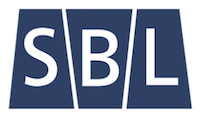Steve Jobs was right. Give the customer an experience, not just a product. And that applies just as well to those of us providing freelance services in the publishing industry.
I see the customer experience as being 50% product quality, 50% customer service. In the end, my job is to service the customer experience.
Product Quality
I’ll start with the most obvious half of that experience. It’s comparable to the “experience” section of a resume if you were looking to be an employee. And for employees, unless they are customer service representatives, this is more than half of what they provide.
What does your product quality consist of? Here are the product quality benefits I bring to a client:
- Expert skill level—Due to experience, but also dedication to improving that skill level, plus talent. Don’t discount talent. We are good at certain things and not so good at other things. I do have some natural talent for editing, proofreading, book indexing. Where are your talents as well as your experience?
- Commitment to quality—The attitude quotient. Product quality is directly proportionate to your attitude about building the product. You can be talented at building your product, but do you actually like to do that? I hope so!
That’s it, really. That’s your relationship to the product. I think most folks put too much emphasis on these two bullets and forget about (or are afraid of) the other half of the customer’s experience—service. And, no, this is not because we are in a “service” business. Your product happens to be considered a service. This is about all those things you should still be getting paid for that are normally called “customer service.”
Customer Service
This is the heart of the experience that leads to both the happy dance and repeat business/referrals. I always took this part for granted, thinking it was primarily the quality of my product that created my reputation, but since I worked only the customer service side for my husband’s custom jewelry business (2010 to 2014), I’ve definitely given more attention to this aspect of my own business with PI.
With PI’s editorial work, feedback on the customer experience is harder to come by (I suppose we could send out a little survey—good idea!). But with hubby’s coin rings as a physical product in an established retail outlet (Etsy), I could see how important the customer service part of the experience was for custom buyers. We were automatically focused on the customer’s needs because so many of hubby’s rings were for important emotional events like weddings or to commemorate ancestry, birth years, etc.
After this experience with a mostly custom crafted product, I began to look at my work with PI differently. I always tell folks that every index is a custom job. I realized that most of our repeat business is due to client relationships cultivated over a number of years in most cases, but also with one-off projects. And most of that service was in the vein of assuaging customer anxieties about getting what they wanted and managing expectations.
What are your customer service goodies? Ours include:
- A friendly and professional attitude with a can-do spirit
- Transparency and accuracy about cost and time estimates with appropriate flexibility that’s fair to both PI and client
- Responsiveness in communication (this doesn’t mean being a slave to email, but I do respond in 24 hours or less whenever possible)
- Expanded availability due to having access to other professional colleagues for referrals (along with the support of PI partners and associates, allows me to say “yes” virtually all of the time)
- Meeting deadlines and if there is a snag, giving notice ahead of time if at all possible
- Willingness to listen to the client’s needs but also able to set professional standards and give advice when required to avoid unrealistic expectations
And this is the key to the happy dance for you and your customer—managing expectations through great customer service.
Go give them a great experience!






Leave a Reply